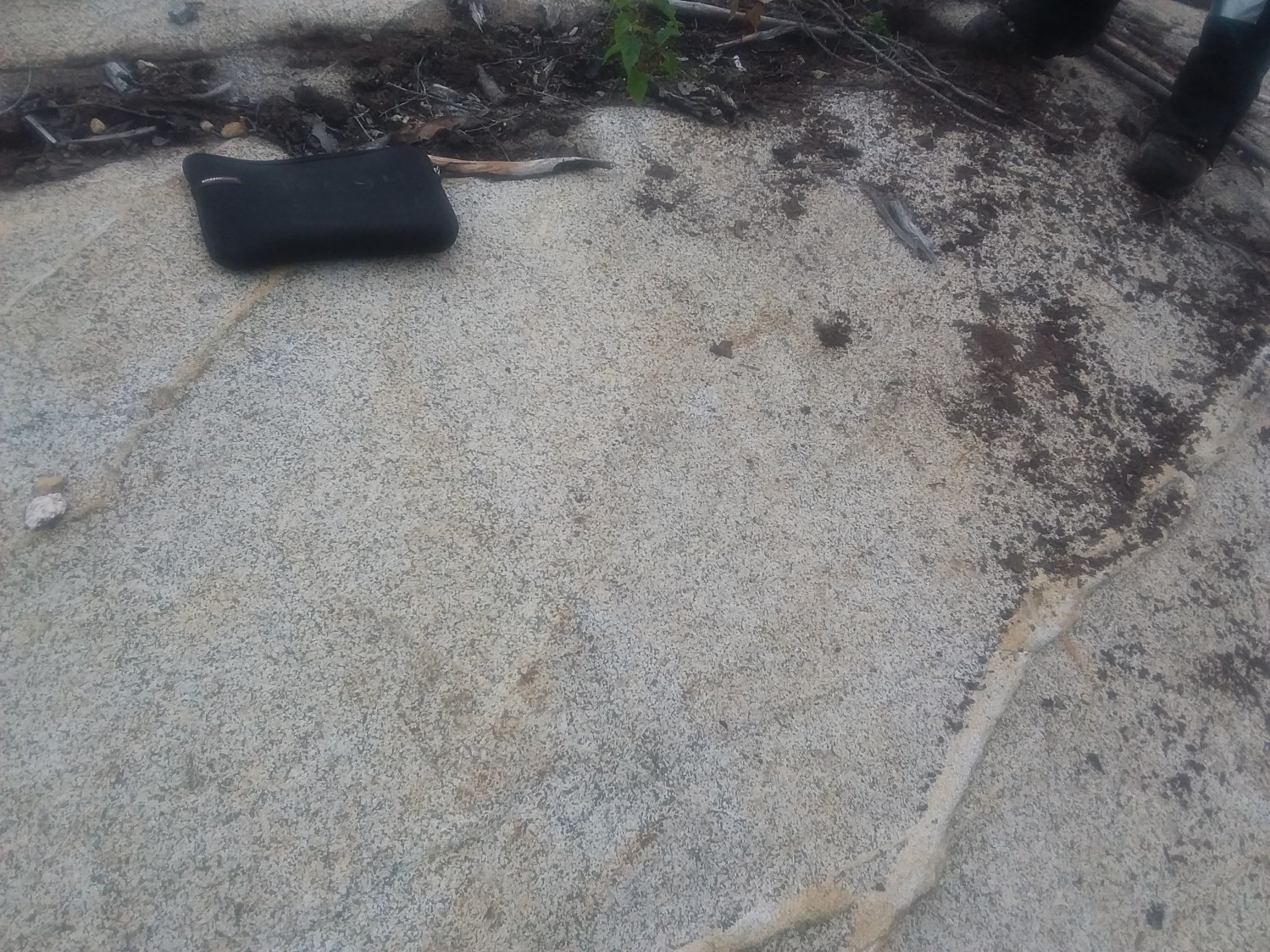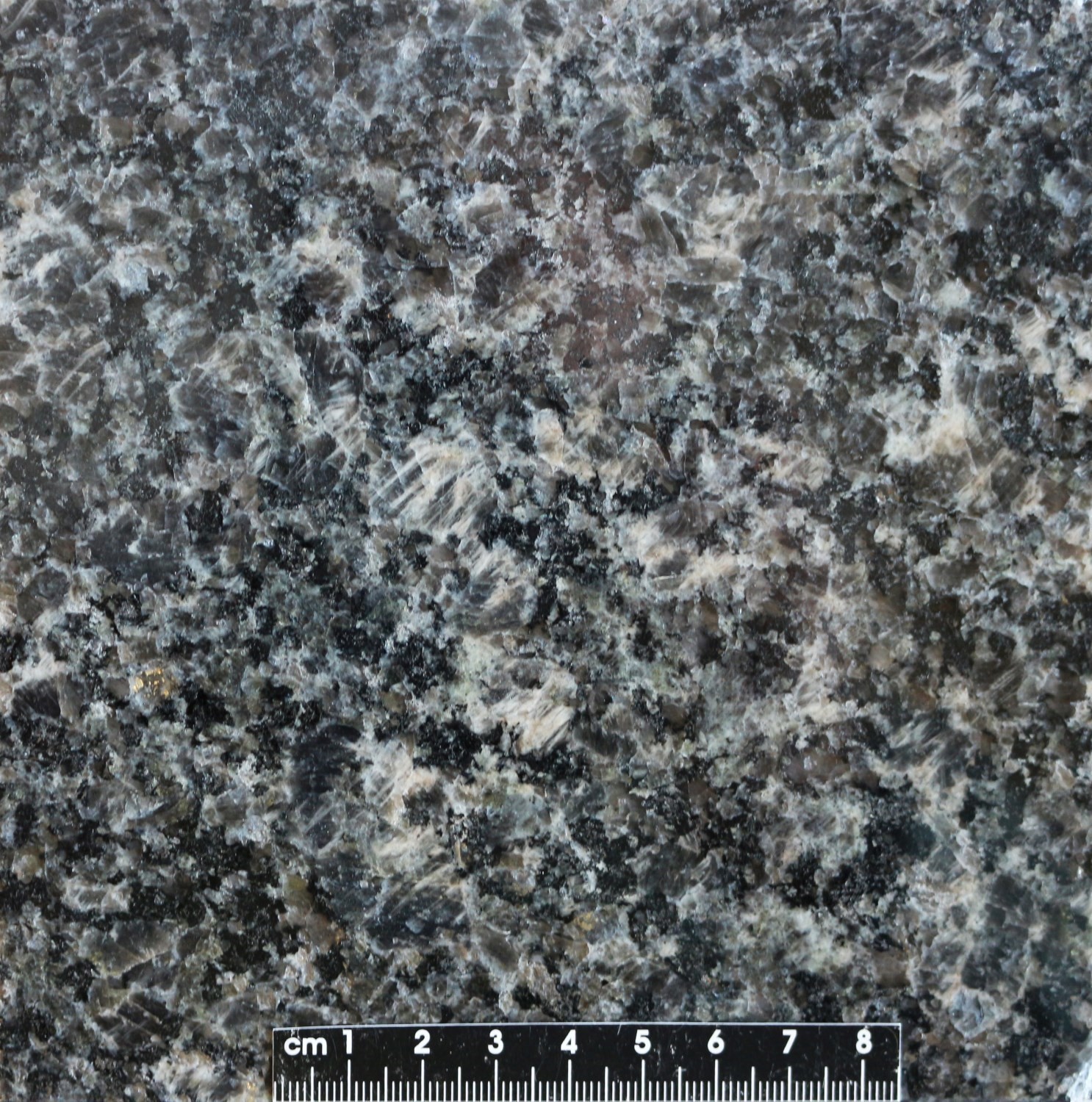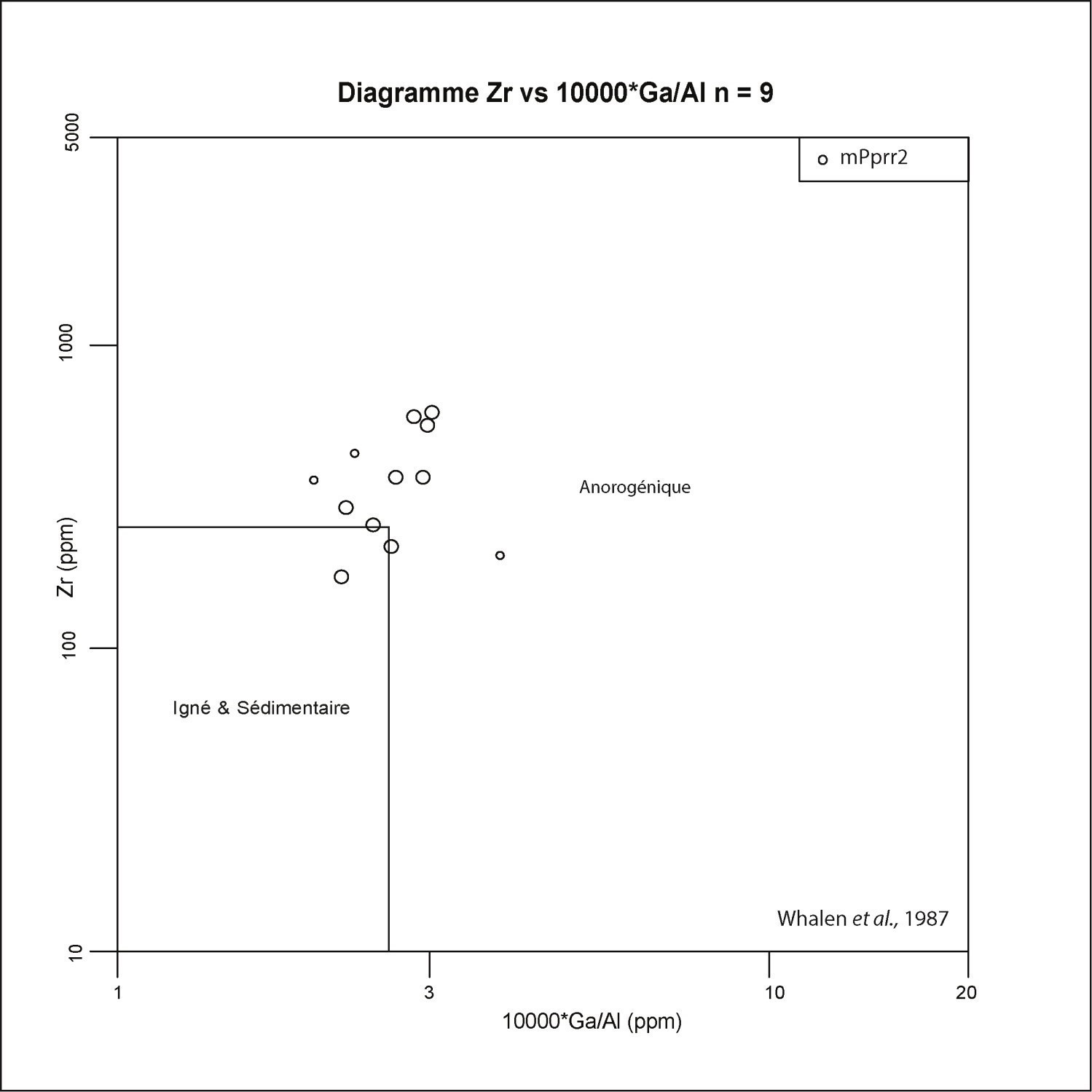
Last modified:
Translation of original French
| Author: | Perreault, 1992, 1993 |
| Age: | Mesoproterozoic |
| Reference section: | |
| Type area: | Rivière-à-Pierre and Portneuf regions (100 km NW of Quebec), Haut-Saint-Maurice (NTS sheets 31P and 21M) |
| Geological province: | Grenville Province |
| Geological subdivision: | Allochton |
| Lithology: | AMCG-type rocks with granite and monzonite assemblage |
| Type: | Lithodemic |
| Rank: | Suite |
| Status: | Formal |
| Use: | Active |
None
Background
The Rivière-à-Pierre Suite was defined in NTS sheet 31P16 by Perreault (1992, 1993) and was also recognized further south in sheets 31P01, 31P02, 31P08, 31P09, 21M04 and 21M05 (Hébert and Nadeau, 1995). For more than 120 years, granite and monzonite of this suite have been used as architectural stone in the quarries of the Rivière-à-Pierre region. For Perreault (1993), the suite consisted of a mafic facies (mainly in sheet 31P08) and a felsic facies. The compilation of geological maps of Perreault (1992), Nadeau et al. (1992) and Hébert and Dufour (2004) in the Système d’information géominière du Québec (SIGÉOM) indicates a mix of units in this suite.
In mapping sheets 21M04 and 21M05, Hébert and Bellemare (2007) identified unit mPprr2 as a AMCG suite and separated it into three parts. Subunit mPprr2a consits of monzogranite, monzonite, monzodiorite and coarse-grained granite, mostly greenish and generally foliated, which contain K-feldspath phenocrystals in a matrix of K-feldspar, plagioclase, orthopyroxene (hypersthene) and clinopoxene. Hypersthene is partially replaced by hornblende and biotite. Subunit mPprr2b consists of mangerite, gabbro and jotunite enriched in titanomagnetite and apatite, and containing horizons or enclaves of anorthositic rocks of the mPprr2c facies. Finally, subunit mPprr2c consists of coarse-grained greenish grey-blue plagioclase anorthosite and leuconorite. When mapping the Borgia Lake region, Moukhsil and Côté (2018) only observed the mPprr2 unit without the subunits.
Description
Rivière-à-Pierre Suite 1 (mPprr1): Porphyraceous ± Hyperthene Granite and Monzonite
This unit consists of feldspar granite and monzonite, locally rapakivi whose crystals generally exceed two centimetres. In altered surface, rock is chalk white, or weakly pinkish to rusty-yellow white. In fresh exposure, it is mainly greenish, rarely pinkish grey or brownish. Feldspar phenocrystals, usually rounded, sit in an unabundant matrix of quartz, biotite and hornblende resulting from primary hypersthene retrograde metamorphism. Plagioclase is often perthitic to mesoperthitic and myrmekites are common. Monzonite is porphyraceous, greenish and massive to weakly foliated. It is rarely pinkish grey or brownish. It contains about 10% biotite and hornblende, and hypersthene locally (mangerite). In both facies of this unit, accessory minerals (<5%) are zircon, allanite, titanite, magnetite, epidote, apatite and scarce monazite.
Rivière-à-Pierre Suite 2 (mPprr2): Granite, Monzonite, Monzogranite, Monzodiorite, Granodiorite, Mangerite, Syenite
Unit mPprr2 forms an ovoid mass that is easily distinguished by its magnetic signature. It is leucocratic, pinkish grey to forest green and contains up to 10% hornblende and biotite, and orthopyroxene locally (mangerite). Rocks of this unit are generally undeformed and have a massive or slightly foliated texture. Paragneiss enclaves are observed locally on the edges of these intrusive masses. Enclaves are characterized by a cordierite-orthopyroxene-plagioclase-orthose-quartz ± garnet ± biotite metamorphic assemblage.
Monzogranite is yellowish white in altered surface, while monzonite is rather beige. Monzodiorite, on the other hand, is greyish and granite is whitish. In fresh exposure, all these rocks are green. Rocks with high quartz content are light green, while those that are low in quartz are dark green. Grain size is variable, ranging from coarse to medium. Large (>1 cm), isolated phenocrystals of rounded or prismatic feldspar, sometimes rapakivi or antirapakivi, are commonly found in a medium-grained (0.1-0.5 cm) matrix (20-40%). Under the microscope, feldspar is perthitic but some mesoperthites are also visible. Rock contains orthopyroxene (hypersthene) and clinopyroxene. In places, orthopyroxene is partially replaced by hornblende and biotite. Dioritic rocks are locally observed as enclaves or units intruded by adjacent felsic rocks. These dioritic rocks may contain up to 2% apatite.
In the Borgia Lake area (sheets 31P09 and 31P16, Moukhsil and Côté 2018), monzonitic, granitic and syenitic facies were mapped. Under the microscope, syenite is composed of K-feldspar, plagioclase, quartz, clinopyroxene, amphibole, titanite, biotite, zircon, apatite and allanite. Clinopyroxene is anhedral, highly altered and surrounded by other ferromagnesian minerals. Amphibole is subhedral and locally biotitized or chloritized. Trace allanite is surrounded by concentric fractures with metamicte texture. Apatite is disseminated and as inclusions in ferromagnesian minerals. When present on the edge of amphibole, magnetite has a titanite rim. Finally, K-feldspar is generally porphyritic and antiperthitic.
Monzonite and quartz monzonite, on the other hand, are composed of amphibole, clinopyroxene, apatite, biotite, quartz, zircon and calcite (secondary). K-feldspar is antiperthitic, porphyritic, with grain-edge mortar texture and may contain plagioclase inclusions. Quartz can also be porphyritic and myrmekitic in places. These facies may contain orthopyroxene (mangerite). If present, orthopyroxene occurs as small, altered circular crystals.
Data used for geochemical study comes from Moukhsil and Côté (2018) and prevails only for unit mPprr2. Rocks of this unit are intermediate to felsic with SiO2 contents ranging from 58.12 to 71.80% and K2O contents ranging from 2.42 to 4.61%. They are all metaluminous (Maniar and Piccoli, 1989) and type I (igneous origin, Chappell and White, 1974). Furthermore, these rocks would have developed in an anorogenic context (Whalen et al., 1984).
Thickness and Distribution
The Rivière-à-Pierre Suite is more than 100 km long, from the Saint-Raymond-de-Portneuf region to the Métabetchouane region. It ranges in width from 10 to 30 km.
Dating
Unit mPprr1 is dated 1058 ±1 Ma (Nadeau and van Breemen, 2001).
| Isotopic System | Mineral | Crystallization Age (Ma) | (+) | (-) | Reference(s) |
| U-Pb | Zircon | 1058 | 1 | 1 | Nadeau and van Breemen, 2001 |
Stratigraphic Relationship(s)
The Rivière-à-Pierre Suite is located in the western extension of the Parc des Laurentides Complex. It is also intrusive in units of the Portneuf-Mauricie lithotectonic domain (Montauban Group, La Bostonnais Complex) and contains paragneiss enclaves. The centre of the suite is massive, with no significant deformation or metamorphism, except for a few porphyritic granitic bodies that have augen texture deformation.
Paleontology
Does not apply.
References
| Author(s) | Title | Year of Publication | Hyperlink (EXAMINE or Other) |
|---|---|---|---|
| CHAPPELL, B.W. – WHITE, A.J.R. | Two contrasting granite types. Pacific Geology; volume 8, pages 173-174. | 1974 | – |
| PERREAULT, S. | Géologie du Grand lac Bostonnais. Ministère des Ressources naturelles et de la Faune, Québec, 1 1:50,000 map. | 1992 | CG SIGEOM31P |
| HÉBERT, C. – NADEAU, L | Géologie de la région de Talbot (Portneuf). Ministère des Ressources naturelles, Commission géologique du Canada, 16 pages, 1 1:50,000 map. | 1995 | ET 95-01 |
| HÉBERT, C. – DUFOUR, S. | Carte de compilation du feuillet 31P01. Ministère de l’Énergie et des Ressources naturelles, Québec. | 2004 | CG SIGEOM31P |
| MOUKHSIL, A. – CÔTÉ, G. | Géologie de la région du lac Borgia, Province de Grenville, nord de La Tuque, régions de la Mauricie et du Saguenay – Lac-Saint-Jean, Québec, Canada. Ministère de l’Énergie et des Ressources naturelles, Québec. | 2018 | Bulletin géologiQUE |
| NADEAU, L. – VAN BREEMEN, O. | U-Pb zircon age and regional setting of the Lapeyrère gabbronorite, Portneuf-Maurice region, south-central Grenville Province, Quebec. Current Reasearch, 2001-F16, 10 pages. | 2001 | |
| PERREAULT, S. | La suite plutonique de Rivière-à-Pierre, Portneuf: pétrologie, géochimie et mise en place pendant l’orogenèse grenvillienne. Ministère de l’Énergie et des Ressources, Québec, pages 25-29. | 1993 | DV 93-03 |
| WHALEN, J.B. – CURRIE, K.L. – CHAPPELL, B.W. | A-type granites: geochemical characteristics, discrimination and petrogenesis. Contributions to Mineralogy and Petrology; volume 95, pages 407-419. | 1987 | – |




